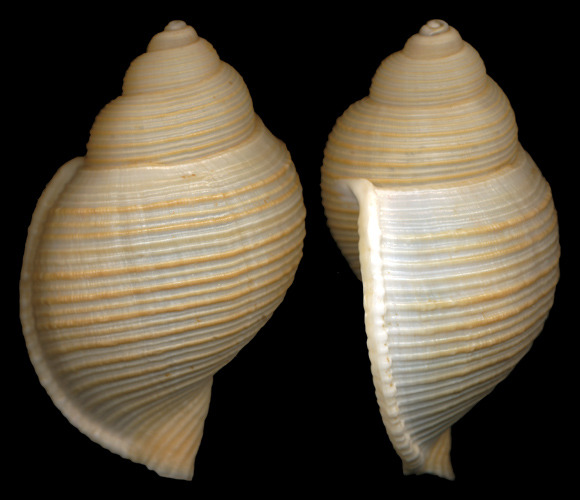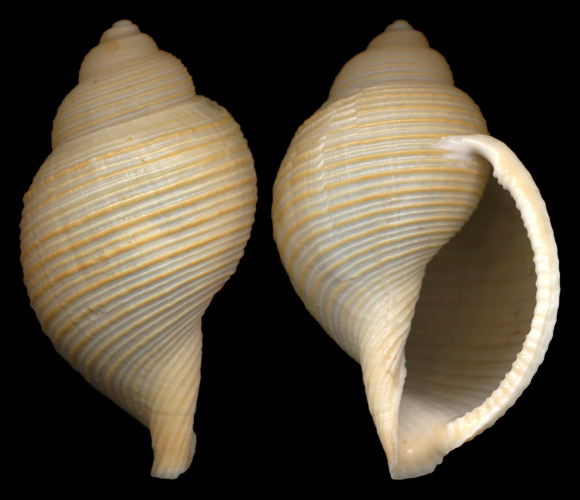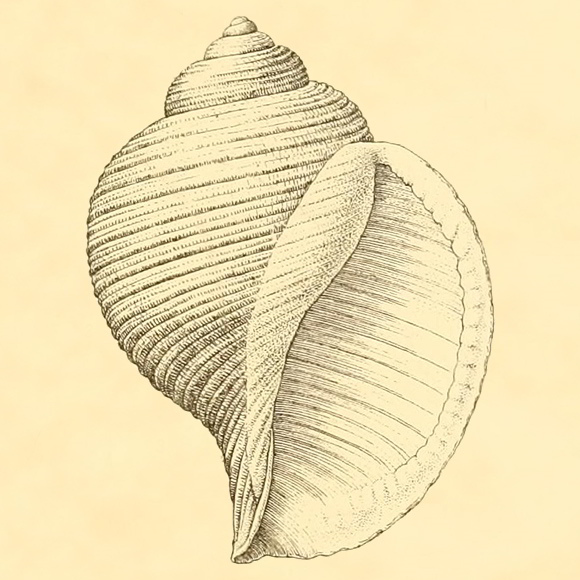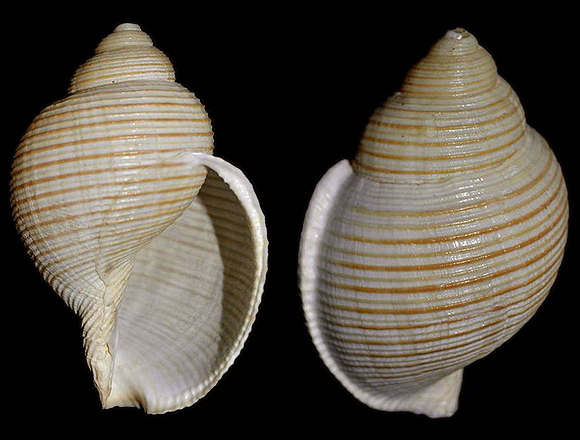(Verrill & Smith in Verrill, 1881)

New Jersey to Colombia, Iberian peninsula, Mediterranean, Indo-west Pacific. Predator in circalittoral muddy sands, and deeper (600-900m in Bouchet & Warén, 1993). Basionym: Dolium bairdii. Synonyms: biornatum, kuroharai, lineatum, solidior… – Above and below: 250-350m deep, Málaga, Andalucia, S. Spain. 67mm.


« A moderately large species, having nearly the form of D. perdix and D. zonatum. Male. Shell broad ovate, with seven broadly rounded whorls; spire elevated, apex acute; nuclear whorls about three, smooth. Suture impressed, but not deep, nor channelled, the last whorl is somewhat flattened […] below the suture, for some distance, corresponding to an inward flexure of the outer lip. Aperture elongated, irregularly ovate; outer lip regularly rounded, except for a short distance posteriorly, where it is slightly incurved, its edge is excurved, acute externally, distinctly but not prominently crenulated within, except posteriorly, where a posterior canal is slightly indicated. Columella straight. Canal short and broad. The sculpture is peculiar: it consists of numerous (about 40 on the last whorl) rather prominent, squarish, clearly defined revolvin ribs, less than 1mm broad, separated bv interspaces of about the same breadth, in which there is usually one small narrow rib, alternating with the larger ones; sometimes there are two or more small ones. The whole surface, both of ribs and interspaces, is covered with fine and regular transverse, raised lines. The surface is covered with a very thin pale olive-yellow epidermis, easily deciduous when dry. Color white, except that the larger ribs are alternately light brown and white, and the apex, consisting of about three smooth nuclear whorls, is dark brown. » – A. E. Verrill: “Marine Fauna occupying the outer banks off the southern coast of New England”, The American journal of science vol. 22, New Haven 1881, p.299-300.

Original pictures provided by J. M. Martin (ES).
– (CC BY-NC-SA) –